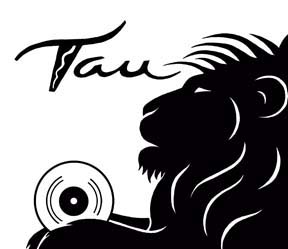“The idea is a series of health related reports for both radio and television syndication. The format will be a mix of current relevant medical information with rock star interviews and audience participation.”
“It’s called Rock Doc”
I was talking to an entertainment lawyer named Jack Uram.
Anesthesia residency was ending in a little over a year. I was not a happy camper. Although the idea of being an Anesthesiologist had sounded good, the options for employment did not appeal to me at all.
Watching TV late one night in the on call room, the idea came to me. MTV had started two years before in 1981. It was all music videos, but I knew at some point, they would have informational content. Most major media outlets had medical correspondents, why not MTV. And for that matter what about Rock and Roll radio.
“Yea go on.” He said.
I continued.
“The idea is a series of health related reports for both radio and television syndication. The format will be a mix of current relevant medical information with rock star interviews and audience participation.”
He liked it and told me to prepare one. I picked a topic.
Jim Fixx was a famous runner and author. He helped start America's fitness revolution with the publication of his book - The Complete Book Of Running. Unexpectedly, he died during a race. On autopsy they found he had significant heart disease. The point of the story was that looks, can be deceiving. There are many factors determining health.
Now I needed a rock star. I called my old friend Carl Palmer from ELP. He liked the story and he agreed to do a telephone interview. Both Jack and I thought it sounded great.
Jack got me an appointment with Doug Abrams the head of programming at MTV. Although he liked the concept, it was obvious he didn’t know what to do with it. After much deliberation he told me to find a sponsor. We got a different response from radio. Westwood One, a large syndicated network wanted Rock Doc but without me. They didn’t like my voice.
I couldn’t get a sponsor nor was I willing to give up being the front man. Jack thought that I would be good in the media.
He got me a meeting with a friend of his, Jerry Nachman, the news director for NBC in New York City. They were looking for an on camera MD. Jerry thought I was unusual. I wrote a piece on Anesthesia and with a crew from NBC we filmed in the OR at Lenox Hill Hospital.
Jerry loved it. I had the job. Days before I was to sign a contract, he left and became the editor of the New York Post.
At least I was in a band. The Gas band was made up of three Anesthesia residents and one practicing anesthesiologist. We tried to get together every couple of weeks. It was a fun way for me to stay in touch with music.
I gave up on the idea of leaving medicine. Instead I focused on coming up with an interesting way to make a living as an Anesthesiologist.
No one was providing anesthesia services for doctors to operate in their office. I was one of the first in New York City. The concept was very successful. I worked with many of the top cosmetic surgeons. They all had celebrity patients. I guess I was the Rock Doc, but not in the way I intended.
In addition to cosmetic surgery my practice included procedures related to infertility. One of my clients was a Park Avenue fertility specialist named Niels Lauerson. We became quite friendly.
Denise Rich, the estranged wife of Marc Rich, a billionaire fugitive from Wall Street, was his girlfriend. She had relocated to the U.S. after having written a song called Frankie. The song was recorded by Sister Sledge and actually was a number 1 in the UK. It didn’t do nearly as well in the US, only reaching #75 on the billboard hot 100.
Lauerson invited Leann and I to go on a weekend adventure with him and Denise. A Friday night concert at Carnegie hall featuring Judy Collins, followed by a flight to Arizona Sat morning. The highlight of the trip was a special visit to the Biosphere, a closed artificial ecological system, which had been built outside of Tuscan.
Biosphere 2, Arizona.
It had a crew of eight people and once the doors were closed they would stay that way for two years. It wasn’t open to the public yet. Denise arranged a special visit.
Over the course of the weekend we talked. Denise was frustrated that nobody really knew her. As a songwriter it was particularly important. Although she had a manager, nothing much was happening.
I was itching to get back into the music business and this seemed to be my chance. I made a pitch. She said she would think about it.
A few months later, I was giving anesthesia at Lauerson’s office when he turned to me and said,
“I have two extra tickets for the Grammys tonight. Do you and Leann want to go?"
I had never been to the Grammys. Of course I wanted to go. Denise was still thinking about my offer. This would be a perfect opportunity.
The Grammys are about the parties after the show. That’s when business gets done. It’s an opportunity to solicit everyone who normally won’t take your call. Although we weren’t on many of the guest lists, Stu Wax, her manager, did a pretty good job getting us in to most of the parties.
Stu and I got along well. We spoke about creating a production company. Denise gave her go ahead. The “Dream Factory” was born.
Denise was working in an old studio on 48th street. I negotiated the deal for her to not only buy that studio, but more space on the same floor. With the help of a well-known known designer, we built two state of the art recording rooms.
Laythan Armor and Gary Haase were the first two producers we signed. Laythan was working with Frankie Knuckles better known as “The Godfather of House Music”. Frankie developed this style of music in the 80’s, while working as a DJ, in a club in Chicago called the Warehouse (House music got its name from a shortened version of the club).
Gary was a killer bass player as well as being a great producer and songwriter. He had worked with Chaka Kahn when he was just 18. Both co-wrote with Denise.
Dream factory was making a name for itself. We picked up a few artists for management and we began to think about starting a label. A lawyer we were working with suggested a meeting with Ric Wake. Ric had won a Grammy for producing Mariah Carey’s first album He was also looking to start a label. Ric and I worked out the details. We went to Denise’s father (the power behind the money). He never liked me and couldn’t understand the music/medicine thing. The label went ahead and I was fired.
From left: Heather Headley, Gary Haase, David Spinozza, Leon Pendarvis, Ray Williams.
After the Dream Factory, I kept my hand in the music world through Gary and Laythan.
Many years later, when Gary came to me with a completed jazz record and no label, I decided to do something about it. The business had changed. Big record companies had lost control and the digital world had emerged. I formed Tau records. Laythan provided some of his artists. I picked up a few and Gary provided the rest. That included Sanjaya, a former top ten from American Idol.
I live in upstate New York, Tau continues and the drumming never stopped.









